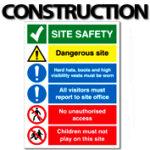
by Marc Ring | Nov 4, 2016 | Workers Compensation
 Adam joined our ABILITY GROUP team 12 months ago after 18 years with Employers Mutual. During the last year Adam was actively involved in managing client, broker and insurer relationships as well as workers compensation related matters. Although we are disappointed to loose Adam, he leaves with our best wishes and we will remain in contact within the industry. Our recruitment process has been in full swing and we continue to interview a variety of quality applicants as we search of the right addition to our team. With the latest significant NSW icare workers compensation changes taking effect in 2017, we want to ensure we have the right skills, behaviours and experience to help our clients/brokers successfully navigate the rapidly changing workers compensation.
Adam joined our ABILITY GROUP team 12 months ago after 18 years with Employers Mutual. During the last year Adam was actively involved in managing client, broker and insurer relationships as well as workers compensation related matters. Although we are disappointed to loose Adam, he leaves with our best wishes and we will remain in contact within the industry. Our recruitment process has been in full swing and we continue to interview a variety of quality applicants as we search of the right addition to our team. With the latest significant NSW icare workers compensation changes taking effect in 2017, we want to ensure we have the right skills, behaviours and experience to help our clients/brokers successfully navigate the rapidly changing workers compensation.
(more…)

by Marc Ring | Oct 26, 2016 | Reforms, Workers Compensation
 In August 2016, our Significant NSW icare Changes article outlined the latest NSW workers compensation changes taking effect in 2017. icare (previously WorkCover NSW) will directly administer policy and billing for the NSW workers compensation scheme. Details since the original announcement have been sparse however we understand NSW businesses will be able to use either an online portal, icare Customer Support Centre or Service NSW to provide wage declarations, make premium related payments and related matters. Many businesses are concerned with the service they will receive following the change, however we see these changes as exciting. At ABILITY GROUP will continue to actively support our clients and brokers with personalise and responsive service.
In August 2016, our Significant NSW icare Changes article outlined the latest NSW workers compensation changes taking effect in 2017. icare (previously WorkCover NSW) will directly administer policy and billing for the NSW workers compensation scheme. Details since the original announcement have been sparse however we understand NSW businesses will be able to use either an online portal, icare Customer Support Centre or Service NSW to provide wage declarations, make premium related payments and related matters. Many businesses are concerned with the service they will receive following the change, however we see these changes as exciting. At ABILITY GROUP will continue to actively support our clients and brokers with personalise and responsive service.
(more…)

by Marc Ring | Oct 21, 2016 | Claim costs, Claim management, Injured Worker, Work Health & Safety, Workers Compensation, Workplace safety
 Construction related work is considered one of the more dangerous or high risk occupations. Heights, heavy and large equipment, complex machinery and unstable ground are just some examples of what workers face in undertaking their work. With the number of construction industry workers having grown by 33% over the last 11 years, site safety is increasingly important and front of mind for most businesses in this industry. No matter how well trained or careful workers claim to be, due to the nature of their jobs construction workers are constantly exposed to hazardous conditions and dangerous situations. To highlight Australia’s National Safe Work Month, here are 5 steps to assist in making construction sites safer.
Construction related work is considered one of the more dangerous or high risk occupations. Heights, heavy and large equipment, complex machinery and unstable ground are just some examples of what workers face in undertaking their work. With the number of construction industry workers having grown by 33% over the last 11 years, site safety is increasingly important and front of mind for most businesses in this industry. No matter how well trained or careful workers claim to be, due to the nature of their jobs construction workers are constantly exposed to hazardous conditions and dangerous situations. To highlight Australia’s National Safe Work Month, here are 5 steps to assist in making construction sites safer.
(more…)

by Marc Ring | Sep 16, 2016 | Bullying, Claim costs, Claim management, Injured Worker, Mental Health, Occupational Violence, Work Health & Safety, Workers Compensation, Workplace safety
 Occupational violence is an incident where a worker is physically attacked in the workplace or during work related activities. It also extends to if a worker is threatened in a way that causes them to reasonably believe they are in danger of being physically attacked. With an ageing population, ensuring aged and other care workers are able to cope with the at times aggressive behaviour associated with some types of dementia or disabilities is an important issue for care providers. Recent data shows care workers represent more than 9 percent of NSW workers compensation claims with over 12,000 physical and mental claims made in the recent 3 year period. Addressing workplace bullying and violence be challenging yet SafeWork Australia provide recommendations.
Occupational violence is an incident where a worker is physically attacked in the workplace or during work related activities. It also extends to if a worker is threatened in a way that causes them to reasonably believe they are in danger of being physically attacked. With an ageing population, ensuring aged and other care workers are able to cope with the at times aggressive behaviour associated with some types of dementia or disabilities is an important issue for care providers. Recent data shows care workers represent more than 9 percent of NSW workers compensation claims with over 12,000 physical and mental claims made in the recent 3 year period. Addressing workplace bullying and violence be challenging yet SafeWork Australia provide recommendations.
(more…)

by Marc Ring | Sep 8, 2016 | Rehabilitation
 Recently SafeWork Australia released a statistical report comparing injury rates between shift workforces as compared to non-shift workers spanning a variety of different industries administered in 2013-2014. The report demonstrates the injury rate for shift workers is significantly higher (more than twice the rate) when compared to non-shift workers. The increase in incidence of injury did not span across all shift-working industries. Individuals who operate machinery and drivers had significantly lower rates of injury when compared to their shift-working counterparts in other lines of work. So what shift workers are at the greatest risk? High risk shift industries as being; manufacturing, hospitality/food services, public administration and trades/labourers.
Recently SafeWork Australia released a statistical report comparing injury rates between shift workforces as compared to non-shift workers spanning a variety of different industries administered in 2013-2014. The report demonstrates the injury rate for shift workers is significantly higher (more than twice the rate) when compared to non-shift workers. The increase in incidence of injury did not span across all shift-working industries. Individuals who operate machinery and drivers had significantly lower rates of injury when compared to their shift-working counterparts in other lines of work. So what shift workers are at the greatest risk? High risk shift industries as being; manufacturing, hospitality/food services, public administration and trades/labourers.
(more…)

 Adam joined our ABILITY GROUP team 12 months ago after 18 years with Employers Mutual. During the last year Adam was actively involved in managing client, broker and insurer relationships as well as workers compensation related matters. Although we are disappointed to loose Adam, he leaves with our best wishes and we will remain in contact within the industry. Our recruitment process has been in full swing and we continue to interview a variety of quality applicants as we search of the right addition to our team. With the latest significant NSW icare workers compensation changes taking effect in 2017, we want to ensure we have the right skills, behaviours and experience to help our clients/brokers successfully navigate the rapidly changing workers compensation.
Adam joined our ABILITY GROUP team 12 months ago after 18 years with Employers Mutual. During the last year Adam was actively involved in managing client, broker and insurer relationships as well as workers compensation related matters. Although we are disappointed to loose Adam, he leaves with our best wishes and we will remain in contact within the industry. Our recruitment process has been in full swing and we continue to interview a variety of quality applicants as we search of the right addition to our team. With the latest significant NSW icare workers compensation changes taking effect in 2017, we want to ensure we have the right skills, behaviours and experience to help our clients/brokers successfully navigate the rapidly changing workers compensation.

 In August 2016, our
In August 2016, our 
 Construction related work is considered one of the more dangerous or high risk occupations. Heights, heavy and large equipment, complex machinery and unstable ground are just some examples of what workers face in undertaking their work. With the number of construction industry workers having grown by 33% over the last 11 years, site safety is increasingly important and front of mind for most businesses in this industry. No matter how well trained or careful workers claim to be, due to the nature of their jobs construction workers are constantly exposed to hazardous conditions and dangerous situations. To highlight Australia’s National Safe Work Month, here are 5 steps to assist in making construction sites safer.
Construction related work is considered one of the more dangerous or high risk occupations. Heights, heavy and large equipment, complex machinery and unstable ground are just some examples of what workers face in undertaking their work. With the number of construction industry workers having grown by 33% over the last 11 years, site safety is increasingly important and front of mind for most businesses in this industry. No matter how well trained or careful workers claim to be, due to the nature of their jobs construction workers are constantly exposed to hazardous conditions and dangerous situations. To highlight Australia’s National Safe Work Month, here are 5 steps to assist in making construction sites safer.
 Occupational violence is an incident where a worker is physically attacked in the workplace or during work related activities. It also extends to if a worker is threatened in a way that causes them to reasonably believe they are in danger of being physically attacked. With an ageing population, ensuring aged and other care workers are able to cope with the at times aggressive behaviour associated with some types of dementia or disabilities is an important issue for care providers. Recent data shows care workers represent more than 9 percent of NSW workers compensation claims with over 12,000 physical and mental claims made in the recent 3 year period. Addressing workplace bullying and violence be challenging yet SafeWork Australia provide recommendations.
Occupational violence is an incident where a worker is physically attacked in the workplace or during work related activities. It also extends to if a worker is threatened in a way that causes them to reasonably believe they are in danger of being physically attacked. With an ageing population, ensuring aged and other care workers are able to cope with the at times aggressive behaviour associated with some types of dementia or disabilities is an important issue for care providers. Recent data shows care workers represent more than 9 percent of NSW workers compensation claims with over 12,000 physical and mental claims made in the recent 3 year period. Addressing workplace bullying and violence be challenging yet SafeWork Australia provide recommendations.
 Recently SafeWork Australia released a statistical report comparing injury rates between shift workforces as compared to non-shift workers spanning a variety of different industries administered in 2013-2014. The report demonstrates the injury rate for shift workers is significantly higher (more than twice the rate) when compared to non-shift workers. The increase in incidence of injury did not span across all shift-working industries. Individuals who operate machinery and drivers had significantly lower rates of injury when compared to their shift-working counterparts in other lines of work. So what shift workers are at the greatest risk? High risk shift industries as being; manufacturing, hospitality/food services, public administration and trades/labourers.
Recently SafeWork Australia released a statistical report comparing injury rates between shift workforces as compared to non-shift workers spanning a variety of different industries administered in 2013-2014. The report demonstrates the injury rate for shift workers is significantly higher (more than twice the rate) when compared to non-shift workers. The increase in incidence of injury did not span across all shift-working industries. Individuals who operate machinery and drivers had significantly lower rates of injury when compared to their shift-working counterparts in other lines of work. So what shift workers are at the greatest risk? High risk shift industries as being; manufacturing, hospitality/food services, public administration and trades/labourers.